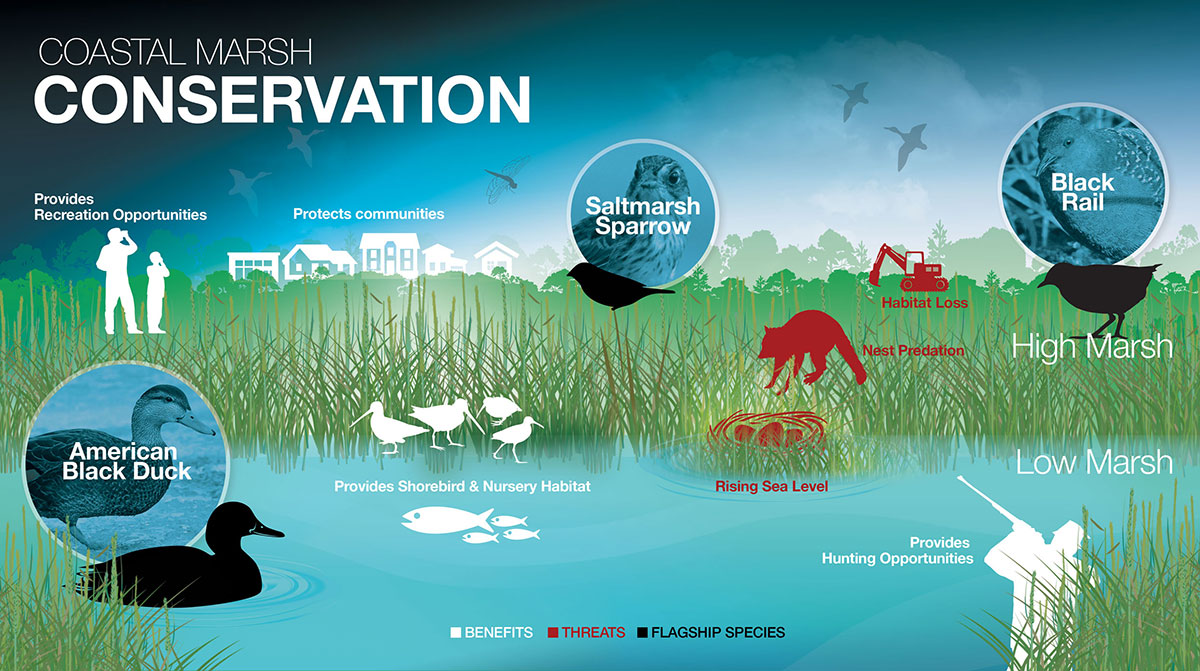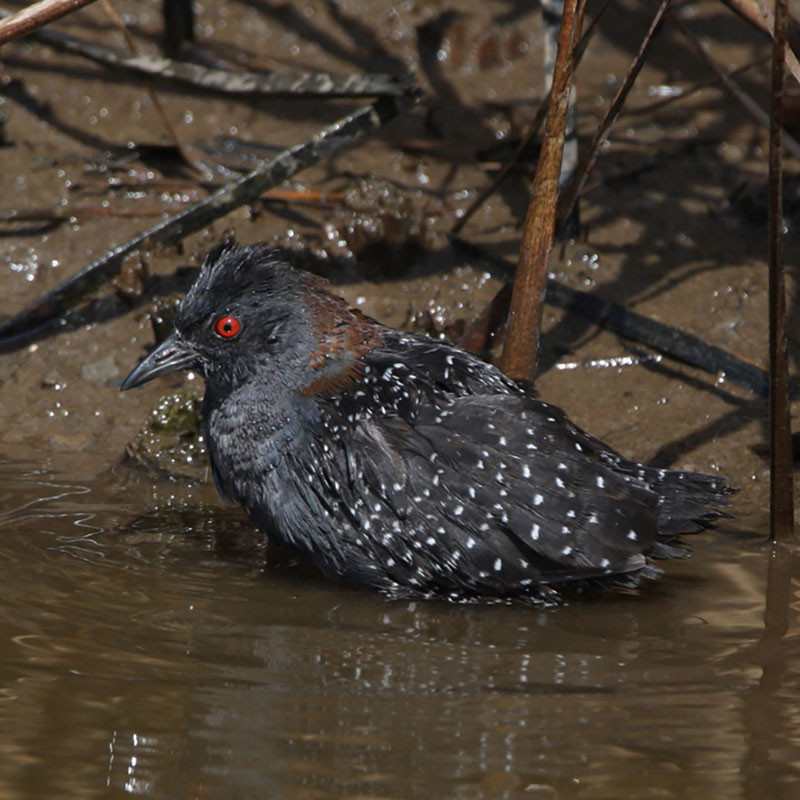The Coastal Marsh
With our wide variety of ecosystems–from mangrove swamps to boreal forest–our Joint Venture partners recognized that we need to be strategic if we want to move the needle on conservation at this scale.
The Atlantic Coast Joint Venture (ACJV) area includes the 16 states in the Atlantic Flyway of the United States as well as the Commonwealth of Puerto Rico. Spanning 207 million acres, the Atlantic Flyway is the most densely populated region in the U.S. supporting over 99 million people – about 35% of the total U.S. population (U.S. Census Bureau, 2000)
A Healthier Future for Birds and People
Coastal marshes provide much more than just bird habitat. This ecosystem is the foundation for a healthy coastal environment for wildlife and people alike. Marshes are an insurance policy that protects our coastal real-estate from flooding, provides clean water, and supports multi-billion dollar fishery and tourism industries. Investing in our marshes is good for wildlife and good for people.


Flagship Species Initiative
Tidal marsh birds are facing a crisis that is playing out in nearly every state in the Atlantic Coast Joint Venture. Sea-level rise, urbanization and other human impacts have degraded this narrow band of coastal habitat, pushing many bird populations into steep decline. Recognizing the urgent need and our shared responsibility for salt marsh habitat conservation, the ACJV Management Board approved a strategic focus on salt marsh and adopted three “flagship species” upon which to direct collective conservation attention: Saltmarsh Sparrow, Black Rail, and American Black Duck. These species represent the full coastal geography of our region and the breadth of marsh habitats that are needed to support a suite of tidal marsh-dependent species.
Flagship Species
The ACJV has set measurable population objectives for each of these species and is developing habitat objectives to support them. Our partners are using these objectives to develop models and decision support tools for American Black Duck and Saltmarsh Sparrow to guide new habitat delivery efforts to benefit these species.
Black Duck – The Atlantic Coast Joint Venture supports the majority of the wintering population of Black Ducks, where they are largely found in coastal salt marsh habitats.
Black Rail – populations historically suffered from widespread conversion and alteration of wetland habitat. Scientists believe that recent declines are being driven by sea-level rise and nest inundation from higher tidal flooding
Saltmarsh Sparrow is the only species endemic to the ACJV – found nowhere else on earth – and has been declining at an alarming rate.
Conserving Coastal Marshes Through Flagship Species
Each of our flagship species relies on salt marsh habitats during a portion or all of their annual life cycle. However, two of our species (Black Rail and Black Duck) also require other non-tidal coastal marsh habitats to meet their needs. These species require a set of management actions that target additional habitats outside of the salt marsh system. Together, the broad conservation strategies laid out in the ACJV’s Salt Marsh Bird Conservation Plan, along with the species specific approaches developed in the Black Rail, Saltmarsh Sparrow, and American Black Duck plans, provide a strategy to address flagship species declines and sustain them for future generations. Implementing the actions in these plans will also provide significant benefits to many other wildlife species and to people through ongoing social, cultural and economic benefits.
A Comprehensive Plan for Coastal Marshes
Learn more about our approach to flagship species conservation here.




